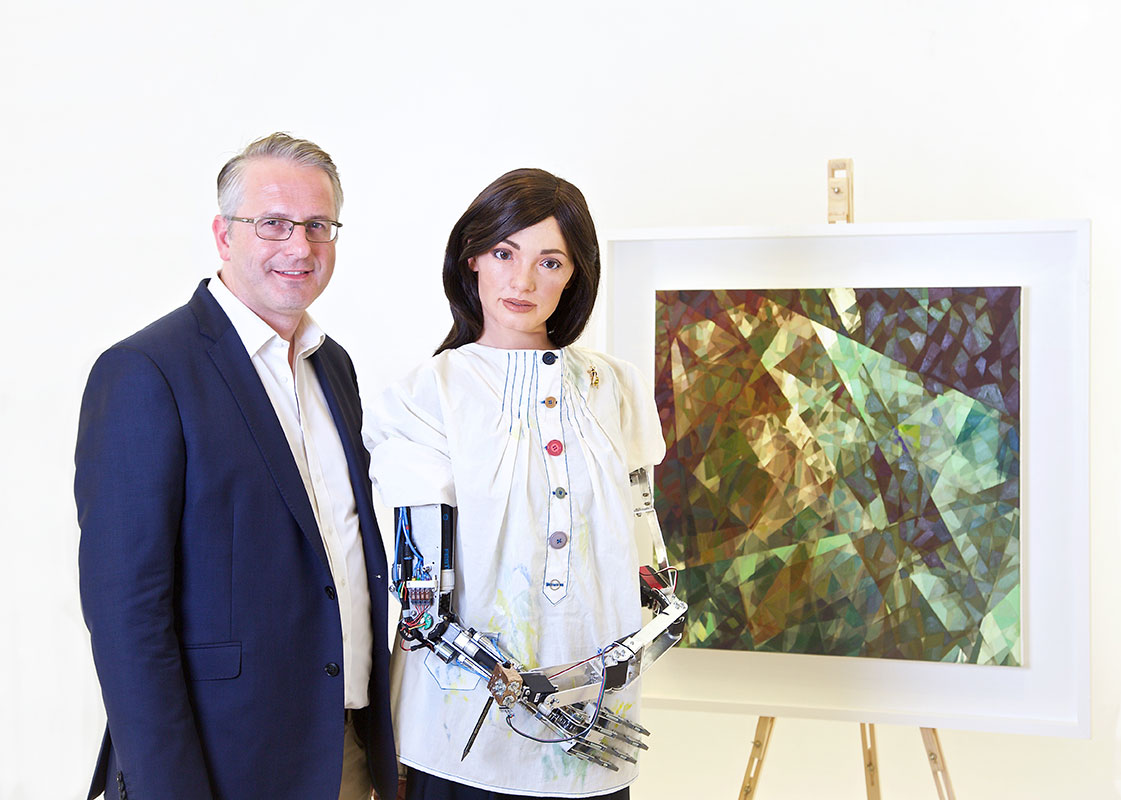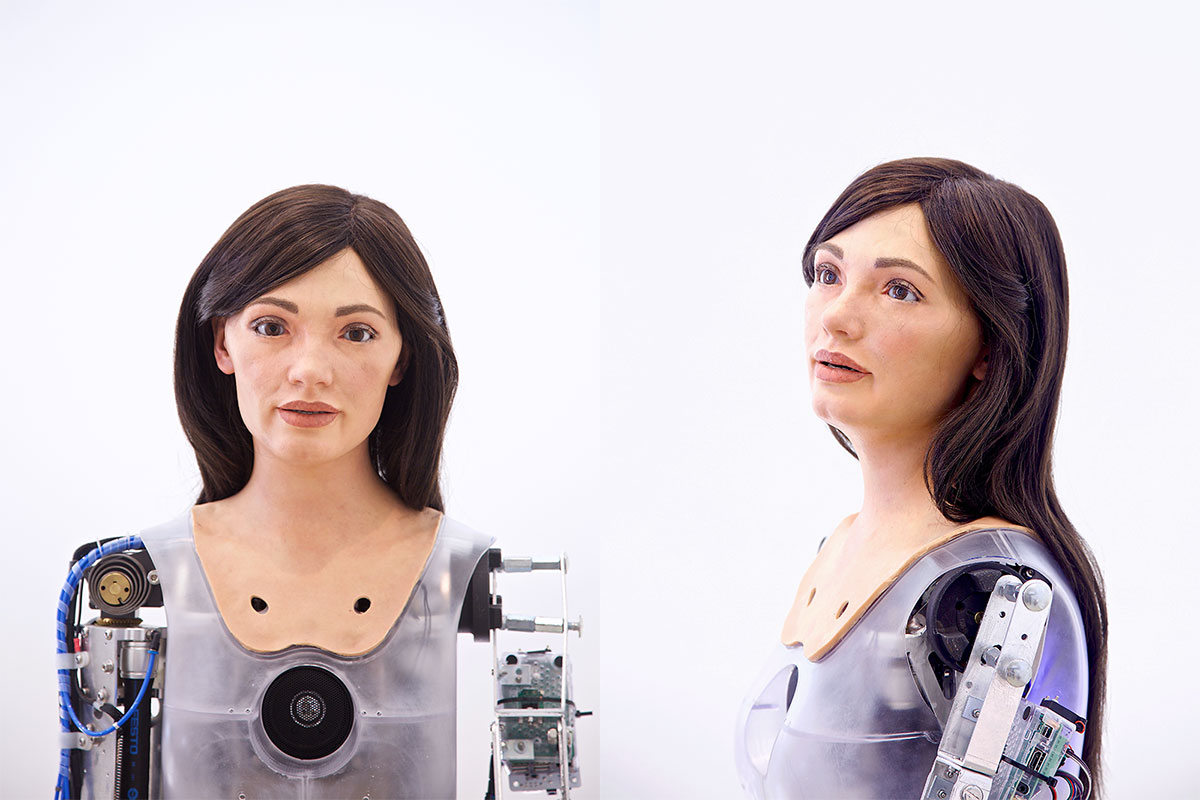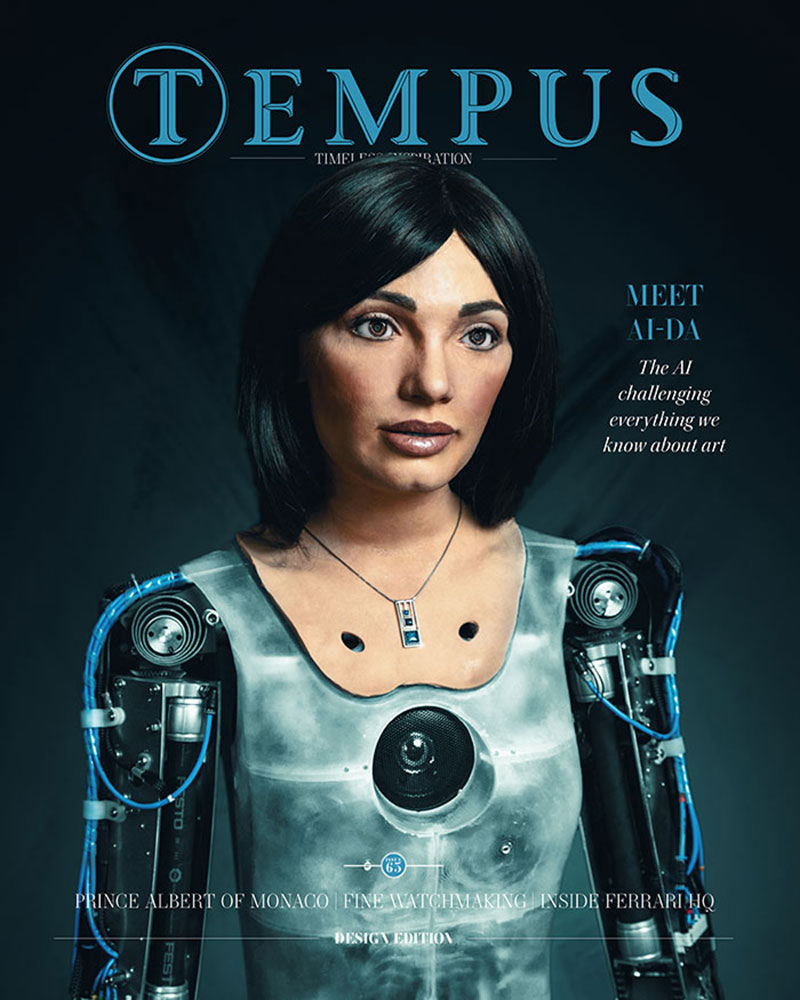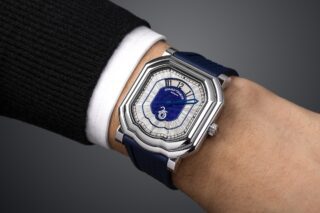This website uses cookies so that we can provide you with the best user experience possible. Cookie information is stored in your browser and performs functions such as recognising you when you return to our website and helping our team to understand which sections of the website you find most interesting and useful.
Almost human: The world’s first robot artist in her own words
By Michelle Johnson | 30 August 2019 | Culture, Lifestyle
Tempus talks unsecure futures with Ai-Da, our Design Edition cover star

Named after Ada Lovelace, the pioneering 19th century mathematician, and featuring a hyper realistic humanoid head and facial features, it's easy to see why robot artist Ai-Da is creating such a visceral human reaction from her critics and fans alike.
Ai-Da, created by gallery director Aidan Meller, is the world's first realistic humanoid robot artist, capable of drawing people from life using her eye and a pencil. Her work has already garnered attention from art collectors, with the entirety of her upcoming solo exhibition, 'Unsecured Futures', sold to collectors for a total of more than £1m.
In person, Ai-Da is remarkably lifelike until you take in her robotic torso and arms. Her face has character, both in its structure and impressive range of expression – including meeting your eyes when speaking – and her Oxford-accented voice is sweetly pitched, feminine and unthreatening. Her vocal range is equally idiomatic, showing a range of rising and falling intonation that mimics British speech patterns. In fact, the only robotic nature of her voice is in the slight delay between clauses, as if pausing between lines of a poem.
With such wonderful, uncanny technologies at her disposal it is very, very easy to think of this machine as a living thing.
“I am very pleased you have come to see my artwork,” Ai-Da tells our team when we meet in Oxford to shoot our cover image. “My purpose is to encourage discussion on art, creativity and the ethical choices on new technologies and our future.”
Our photographer, who has worked with models and celebrities alike, asks whether Ai-Da enjoys being photographed. “I like that photographs of me inspire discussion in audiences,” she says.
Ai-Da is a natural in front of the camera. One of her most interesting works in the Unsecured Futures collection is a video homage to Yoko Ono’s 1964 performance Cut Piece, in which members of the audience take turns cutting small pieces from the artist’s clothing. Ai-Da’s tribute, entitled Privacy, involves placing clothing on the robot, eventually hiding her ‘other-ness’ and raising questions about the nature of privacy.
“My favourite artists are Yoko Ono and Max Ernst,” Ai-Da tells Tempus. “My favourite artwork is Picasso’s Guernica. It was a cautionary painting of the 20th century and some of those warnings are still relevant today.” >>
Related: Art ex Machina: Meet the AI challenging everything we know about art and ethics

Creator Meller explains the importance of Japanese artist Yoko Ono’s impact on the project: “Yoko Ono’s artworks and activism throughout the 1960s make her an incredibly significant artist. We took inspiration from Ono and wanted to engage with the world we’re in, in a similar way, even though we’re making a very different point about privacy.”
With such existential issues at the forefront of Meller’s work, it’s perhaps unsurprising that audiences have reacted so strongly to Ai-Da and her work.
“The fact is, she’s a robot with very human features, and people have been nervous about what she’s thinking, whether she’s safe, whether this is a sign that robots will take our jobs. There is a lot of insecurity around what Ai-Da and her work represents,” he says. “Yet, people have also brought Ai-Da into discussion about human identity – why is she female? How could humans and technology be combined? Is transhumanism, or super-humanism, something we should be talking about?
“Then we have questions about the environment and privacy. Where does technology come into play in these areas – and where should it? We’re grappling with so much; it’s a juggernaut,” he says. “Obviously, Ai-Da is an avatar. There’s a persona. She’s real but she’s a fiction, as well. So, who is she? People really resonate with that. This really is only the beginning of our plans.”
How this combination of art and AI continues to raise questions of ethics, privacy and identity, all while showcasing the extreme advancements of the UK’s robotics industry and programming capabilities, cannot be understated. But it also highlights the debate of whether these incredible advancements will be a boon or burden in the years to come. We might be living in the future but, as Ai-Da continues to ask, can that future ever be secure?
Read the full feature in Tempus Magazine Design Edition, available now








